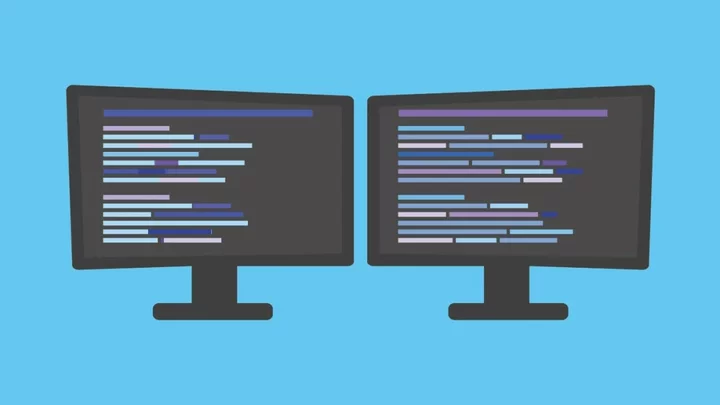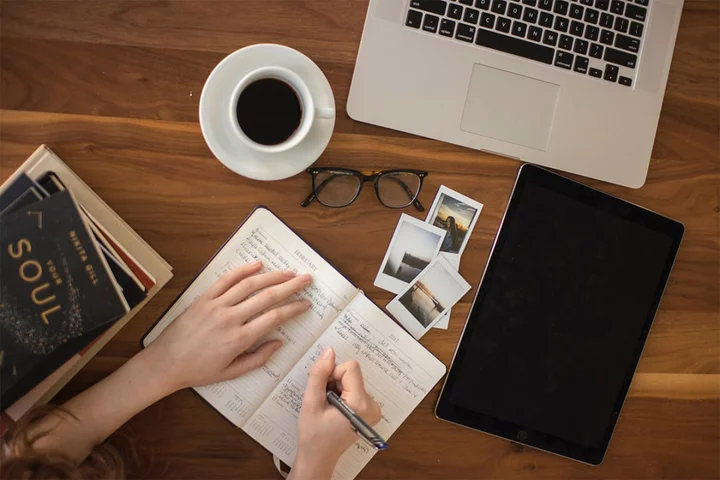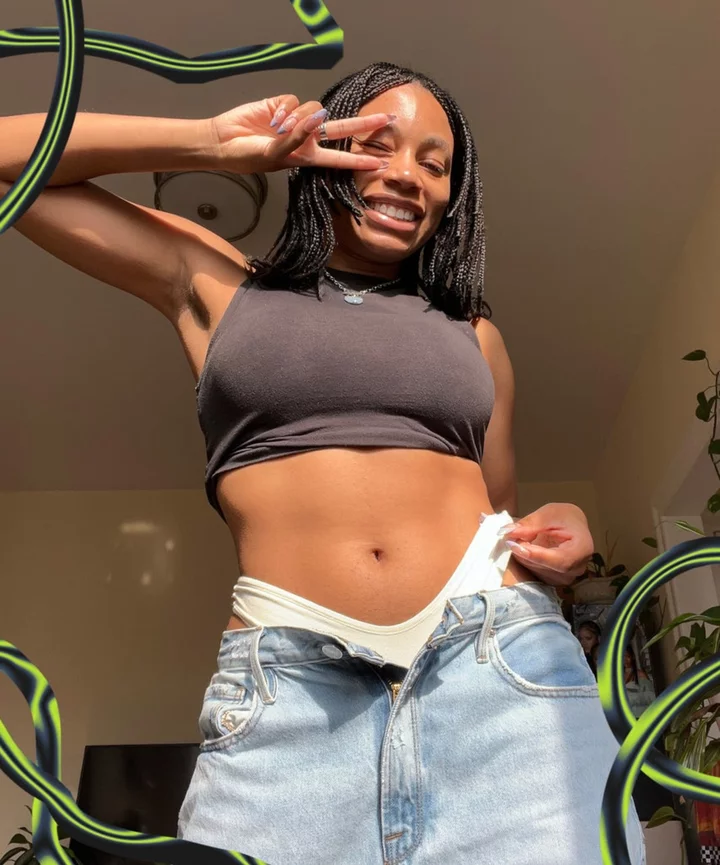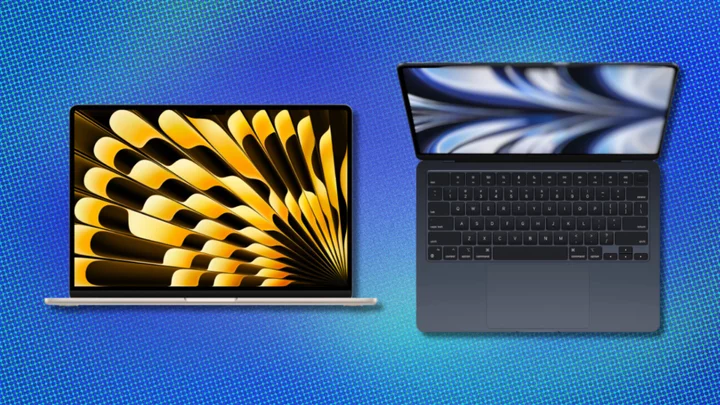Whether you're working hard or playing hard, dual monitors give you more space to get things done. Write a document on one screen while referencing web pages on the other. Game on one screen while chatting in Discord on the other. Pretend you're paying attention to your Zoom call on one screen while you're actually just chatting on Slack on another.
These days, setting up dual monitors is easy, but don't just plug in a second display and call it a day. Once everything is set up, there is more you can do to make that multi-monitor setup work for you.
1. Line Up the Displays
(Credit: Microsoft / PCMag)If your monitors are the same make and model, you can probably skip this section—once you plug them both in, Windows should automatically extend your desktop horizontally. Just adjust each monitor's stand so they line up perfectly, and you're ready to go.
If you have two different monitors, however, you may need to do a bit more work to make them play nicely with each other. For example, maybe you're plugging your laptop into an external display and using them side by side. This will produce some weird behaviors, but it's easy to fix. Right-click on the desktop and choose Display Settings.
From this page, Windows 10 and Windows 11 users can see how their monitors match up in terms of navigational continuity. You can drag the rectangles around so they match the monitors' orientation on the desktop; say, if one is slightly lower than the other or they are in a different order. You may have to do a little trial and error to get them lined up properly.
By lining the monitors up correctly, you will avoid issues when moving the cursor between screens. Instead of jumping up or down the screen, it'll appear in the same spot on the other monitor. This will also prevent (or at least mitigate, in the event your monitors have different resolutions) any areas where it becomes impossible to move the cursor between screens.
(Credit: Microsoft / PCMag)Mac users have a similar display settings menu in macOS. Open System Settings and choose the Displays option from the sidebar to view a pop-up menu. Click the Arrangement tab in the menu to align the monitors in a way that makes the most sense for your setup.
2. Make the Monitors Match
(Credit: Microsoft / PCMag)If you have a 4K monitor next to a 1080p monitor, open Display Settings and scroll down to the Scale and layout section to adjust the resolution of each monitor and its scaling. So, if you have two different resolutions, you can set each monitor to its native resolution but increase the scaling on the higher-resolution one, so your windows appear the same size on each.
To go even further, you can use each monitors' built-in settings to adjust brightness and color to make them match as closely as possible. Once you're done tweaking all these settings, your monitors should match up much more closely, making it easier and more pleasant to move windows between them.
(Credit: Microsoft / PCMag)If you need to adjust the scaling on a Mac, open System Settings > Displays, then select Scaled from the pop-up menu and choose a new resolution preset. You can also adjust brightness and color from the Displays menu.
3. Tweak Your Taskbar
(Credit: Microsoft / PCMag)By default, Windows will extend your taskbar to both monitors, which can be handy—though you can customize it a bit further to your liking. Right-click on the taskbar and choose Taskbar Settings. Things will look slightly different depending on your version of Windows.
In Windows 10, scroll down to the Multiple Displays section. You can disable Show taskbar on all displays to remove the taskbar from your secondary monitor. This is how I personally choose to use dual displays, since it puts all my shortcuts in one place.
If you choose to keep it extended across both displays, though, you can decide where you want individual icons to appear: on both monitors, on the main taskbar and the taskbar where that app's window is open, or on only the app's active monitor. You can also choose if you want the taskbar buttons to have labels, Windows XP-style.
On Windows 11, open the same Taskbar Settings menu, then open the Taskbar behaviors drop-down menu. You can disable Show my taskbar on all displays to have the taskbar only display on one monitor. Use the When using multiple displays, show my taskbar apps on drop-down to set where apps will open.
Mac users have limited ability to adjust the Dock when it comes to multiple monitors. You can, however, head to System Settings > Displays > Arrangement and move the white bar to a specific monitor if you wish the Dock to appear in a different spot.
4. Keep the Laptop Closed
(Credit: Microsoft / PCMag)If you have two monitors, you can run your laptop with the lid closed. In Windows, run a search for the word "lid" from the Start menu. Click Change what closing the lid does to open the Control Panel and view power options for your laptop under certain circumstances.
For the When I close the lid option, change the drop-down menu under Plugged in to Do nothing. Click Save changes to make it stick. This now means you can close your laptop's lid and the computer will continue to run, allowing you to see everything from your monitors.
(Credit: Microsoft / PCMag)Mac users can do the same thing under System Settings > Battery and the Power Adapter tab. Pull the Turn display off after slider all the way to the right so it's at Never. You should also check the box next to Prevent computer from sleeping automatically when the display is off. Now you can close the laptop and still use it.
5. Seek Out Super-Wide Wallpapers
(Credit: Microsoft / PCMag)While fancy wallpapers aren't going to increase your productivity, they are one of the coolest parts of having dual monitors, so we have to include it here. Most wallpaper sites have some multi-monitor options, but there are a few places that specialize in super wide wallpapers, including Dual Monitor Backgrounds, WallpaperFusion, and subreddits like /r/multiwall.
Once you have a wallpaper (or collection of wallpapers) you like, right-click the desktop and choose Personalize (then click Background in Windows 11). Browse to the image or folder in question and choose Span to fill the space across all your displays.
(Credit: Microsoft / PCMag)Mac users can right-click the desktop and select Change Desktop Background to open the Desktop & Screen Saver menu. Click the + button in the bottom-left corner of the menu that appears to upload your own background.
6. Study Your Shortcuts
Corsair K70 RGB Pro Mini Wireless Keyboard (Credit: Zackery Cuevas)The beauty of multiple monitors—especially when compared with ultrawide and superwide monitors—is the ability to "dock" windows to the edges of each display, making it easy to view tons of windows at once. While you can always drag your windows around and resize them with the mouse, that's arduous and time consuming.
That's why there are a few shortcuts for Windows 10 and Windows 11 that can help (with or without dual monitors), including:
Win + Left and Win + Right: Snap the active window to the left or right side of the current monitor. You can press the keys again to move it between monitors, or snap it back to its original location.
Win + Up and Win + Down: Maximize or minimize the current window. If the window is currently snapped, this will also resize the window from its snapped position.
Shift + Win + Left and Shift + Win + Right: Move the active window to the next monitor, without snapping it to the edge.
Shift + Win + Up: Maximize the window vertically, which is particularly useful if you don't have a taskbar on your secondary display.
Win + Home: Minimize all windows except the one you're working on, to banish distractions. Press it again to bring all the windows back.
Windows 11 has an even better multitasking feature called Snap Layouts, which allows you to arrange certain windows (like a web browser) into different alignments on the screen for easier viewing.
Mac users have Mission Control, where you press F3 to quickly view all open windows and switch to the one you want. Additional settings can be found under System Settings > Mission Control.
There is also the newer multitasking feature called Stage Manager, which places all open windows into a sidebar for easy access. Head to System Settings > Desktop & Dock > Stage Manager and choose Customize to change your options.
7. Fix That Wandering Cursor
(Credit: Microsoft / PCMag / SnakeByte Studios)While triple monitors allow you to span the game across all your displays—using the Nvidia Surround or AMD Eyefininity settings—dual monitors don't work as well for super-wide gaming, since your crosshair would be right on the monitor bezels. You can, however, game on one monitor while having a walkthrough, chat window, or GPU monitor up on the other.
Most games can work this way without hiccups, but you may find that, in some cases, your cursor can "drift" onto the other monitor while you're still in-game. I've had this happen with multiple titles, including The Witcher 3, Doom, and Metro: Last Light.
Thankfully, one enterprising developer set out to fix this problem with a tool called Cursor Lock, and in my experience, it works beautifully. Start the program, check the Open Program box, and then enter the path to the game's EXE file. This will create a new shortcut for you to use.
Now, when you launch the game using this shortcut, your cursor should stay "locked" to the game window unless you Alt + Tab out of it. If that doesn't work, the game in question may need a few extra options, which you can learn about in Cursor Lock's video tutorial.
8. Do Even More With DisplayFusion
(Credit: Binary Fortress Software)If, after all that, you're still left wanting more, a third-party tool called DisplayFusion was designed with dual monitors in mind. With DisplayFusion running in your system tray, you can gain more control over your wallpapers, create custom keyboard shortcuts, align windows to the edges of any display, or automatically dim the inactive monitor so you don't get distracted.
Seriously, this program is chock full of useful options, so download the free version to try it out for yourself. It's a bit more limited in features than the paid version, but if you like what you see, you can buy a license for $29. I purchased it eight years ago and haven't regretted it for a second. Mac users have a free and open-source option called Rectangle.









